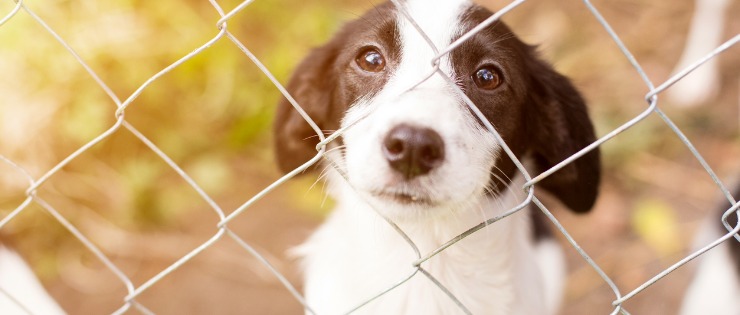
You’re taking on a rescue dog and you want to give him the very best second chance at life. Your new dog may need introducing to other pets, young children as well as friends and family. It can be a stressful time for you both, but there are a few things you can do to make the early days and weeks a little easier.
Realistic Expectations for Your Rescue Dog
By taking on a rescue dog, you’re giving them something wonderful - a loving home. But don’t let the idea of your good deed get in the way of reality. Rescue dogs are often given up for adoption because their owner couldn’t cope with them. The dog may have been aggressive towards people, or very destructive and never grew out of the puppy chewing phase. In tough economic times, the dog may have been too expensive to keep. The dog may have been difficult to train or the first owner couldn’t be bothered so the dog knows no boundaries. Even a house trained dog who has been living at a shelter for a time may make a mess in the house before being trained again.
You need to consider all the negative potentials (as well as the positives) and plan for them. Ask yourself if you’ll have time to train the dog and if you can cope with any damage to your house or belongings. Are there young children or seniors in the house who are at risk of an aggressive or jumping dog? You may need to be willing to pay for a professional trainer to help sort out the dog’s bad behaviour if you don’t have the experience. If you plan for the worst case scenario, hopefully you’ll be pleasantly surprised.

What to Expect of Your Rescue Dog in the Early Days
Be patient with your dog, it may not have even had basic training.
Your dog may not be familiar with the commands you use so you may need to work to find ones he is familiar with.
Have a routine so your dog knows when to expect to be fed, training time, bed time etc.
Stay with your dog for the first day or two then leave for short periods before extending your time away from the house so they get used to being by themselves.
If your new dog is destructive or makes a mess, contain the dog to one room so it’s easier to keep an eye on them and house train them.
Not knowing your dog’s background means they may be scared of some people or objects.
If you’re choosing a new name for your rescue dog, don’t expect them to respond to their name for a while.
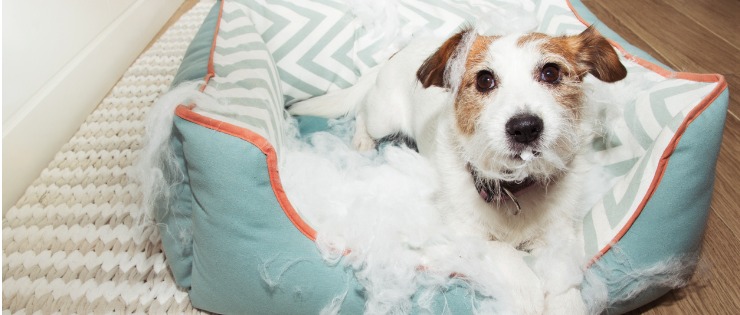
Picking Up and Taking Home Your Rescue Dog
Try to clear your schedule so you can have a week or at least a few days at home with your new dog. It’s going to take time for your new dog to settle in and you want to be there to reassure them. Have everything you will need for the dog’s first week such as bowls, bedding, food, treats, toys, their collar and lead. You don’t want to have to leave them at home unaccompanied because you need to go to the shops in the first few hours of picking them up.
When you put your dog in the car to go home, let them sniff and familiarise themselves with the car before taking off.
Take your dog into the house on a lead so you direct them to the main area where they’ll live. If you want to keep them out of some areas of the home, put up a gate or close the door.
After smelling the house, take your new dog outside to the grass to see if they need a toilet break. Let them sniff around the yard and show them where the water bowl is.
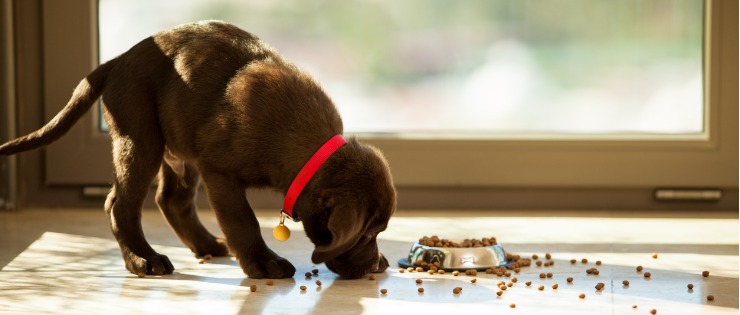
Tips for Taking Home Your Rescue Dog
Take your dog for a walk around the block before going into the house so you tire them out a little and start building a bond with them. Praise and reward them with small treats.
Invite friends to your house for a short visit after a few days of family members only. Try to keep the kids' excitement level down so the dog isn’t too stressed or excited.
Try to find out what the shelter has been feeding them so you can offer the same foods at first then slowly introduce the foods you want them to eat regularly.
Decide where your dog will sleep and put their bedding there but be prepared to move them to another spot if they’re crying at night and you need your sleep!
Introducing Your Rescue Dog to Other Pets
If your rescue dog isn’t the only pet you have, you’ll need to consider how you will introduce them. You want your pets to be best mates but it doesn’t always work out that way. An introduction that doesn’t go well can impact on their relationship long-term.
Introducing Your Rescue Dog to Your Cat
If you have a cat you want to introduce to your new dog, you’ll need to take care. A dog’s instinct is to chase a fast moving object so if your cat runs, expect your dog to take off after it. Dogs have been known to kill cats so make sure your cat can protect itself.
When you do the first introduction, do it in a room where the cat can quickly get to a higher location out of reach of the dog. Keep your dog on a lead so if it does want to run, you can restrain them. Even after the first introduction, you may need to keep them apart for a long period so invest in child safety gates so your cat can stay in their part of the house without fear and they can get to know each other through the gate.
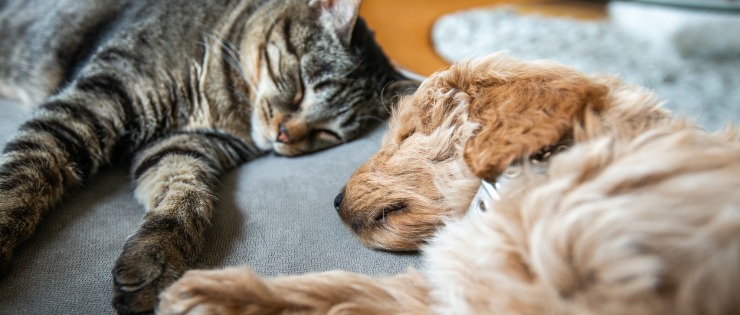
Introducing Your New Rescue Dog to Your Existing Dog
If you already have a dog, there’s no guarantee the two dogs will get on well with each other. For the first introduction, try to have them meet on neutral ground at a park. Have both dogs on leashes so you can maintain control. If that’s not possible, have the dogs meet in the yard rather than the house.
If your existing dog guards their toys, take them away for the first few weeks they get to know each other. Have multiple food and water bowls and make sure there are plenty of toys available for both of them when they’re reintroduced. Any high value treats like bones shouldn’t be given to either dog until they’re comfortable with each other.
Take the introductions slowly so they can get used to each other. Feed them in separate areas so they don’t need to guard their food from the other dog.
It’s important not to leave your pets together unattended until you’re sure they won’t harm one another. Stay close by whenever they’re together so you can watch their behaviour and separate them before any aggressive behaviour occurs. The risk isn’t as high if you have a puppy compared to a mature dog.
Tips for Introducing Pets
Don’t hold your cat close to a dog. The cat may scratch you in its attempt to get away or lash out and scratch the dog.
Before you bring home the dog, decide where they both will stay. If you need to move the cat’s litter tray or food bowl, do it well before the dog arrives so it has time to get used to the new routine.
Be prepared to supervise your cat and dog’s interactions for a long time to ensure everyone stays safe.
Think about getting a puppy rather than a mature dog if your cat is likely to be stressed as a pup will be less intimidating.
Don’t feel you need to introduce your existing pets to the new dog straight away. They can slowly get used to each other through the gate or by smelling their scent in another room.
If there’s tension between your existing pet and rescue dog, speak to a vet or vet behaviourist about how you can improve relations between them!
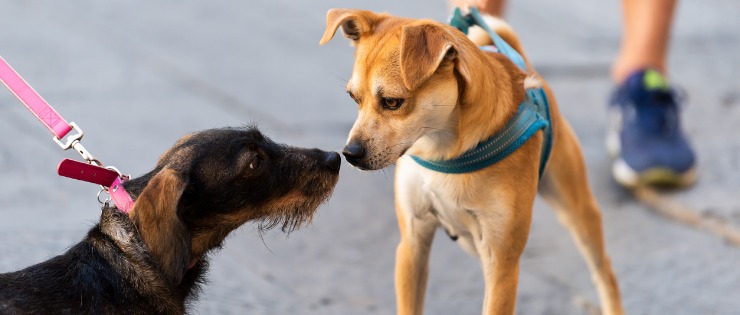
Introducing Your Rescue Dog to Young Children
If you’ve ever looked at a rescue dog website, you’ll notice many dogs are marked as unsuitable for rehoming with young children. Sometimes the shelter knows the dog doesn’t have the patience or personality to put up with little people who like to get up close and personal with their pets. The dog may have been given up by a family because it showed aggressive behavior towards children. Other times, the shelter doesn’t know the dog’s background and temperament well enough to recommend him for young children.
You might be an older couple who don’t have children living with you. But when grandchildren visit, you want to ensure everyone gets along and the dog poses no threat. You only have one chance at introducing your rescue dog to children so you want to get it right.
Tips for Introducing Your Rescue Dog to Children
Stay at arm’s length of young children and a dog if you don’t know a dog’s background.
Encourage kids to be quiet and not pat the dog as soon as they meet - let the dog sniff them first.
Don’t become complacent about a dog and child’s relationship. You may not know a dog’s personality for several weeks after arriving.
Know the signs of a stressed dog and remove children as soon as you notice them - whale eye, yawning, shaking as if wet, drooling, licking lips, stiff body or pacing.
Teach your children which behaviours dogs don’t like - hard patting, touching their mouth or tail, teasing them with a toy, waking them, and loud noise.
When children come to visit and your dog is not used to children, it’s safest to separate them.
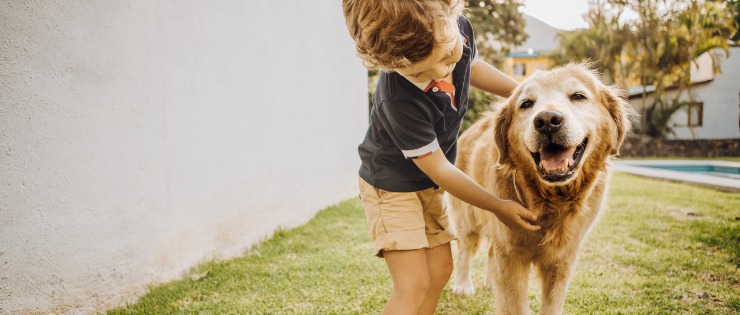
Keeping Your Dog Safe
When you’re buying a rescue dog, particularly a mature one, you usually don’t know much about the dog’s parents. There are no papers listing the dog’s parents and their genetic tests like a breeder supplies with a new puppy. Therefore, it’s impossible to tell if the dog has a congenital condition. It soon becomes clear that a dog that cost you very little could cost you thousands in veterinary bills.
Hereditary conditions aren’t the only risk. Your dog, particularly if it’s young, may eat a foreign object that needs to be surgically removed. X-rays and an operation can cost a small fortune. Injuries are another concern, from being hit by a car to a dog attack at the park.
Your family can quickly fall in love with a new furbaby and see them as a member of the family that needs to be saved, no matter what the cost.
It’s best to take out a HIF Pet Insurance policy soon after you take your rescue dog home. There are multiple policy options to choose from to suit you and your dog’s future needs.